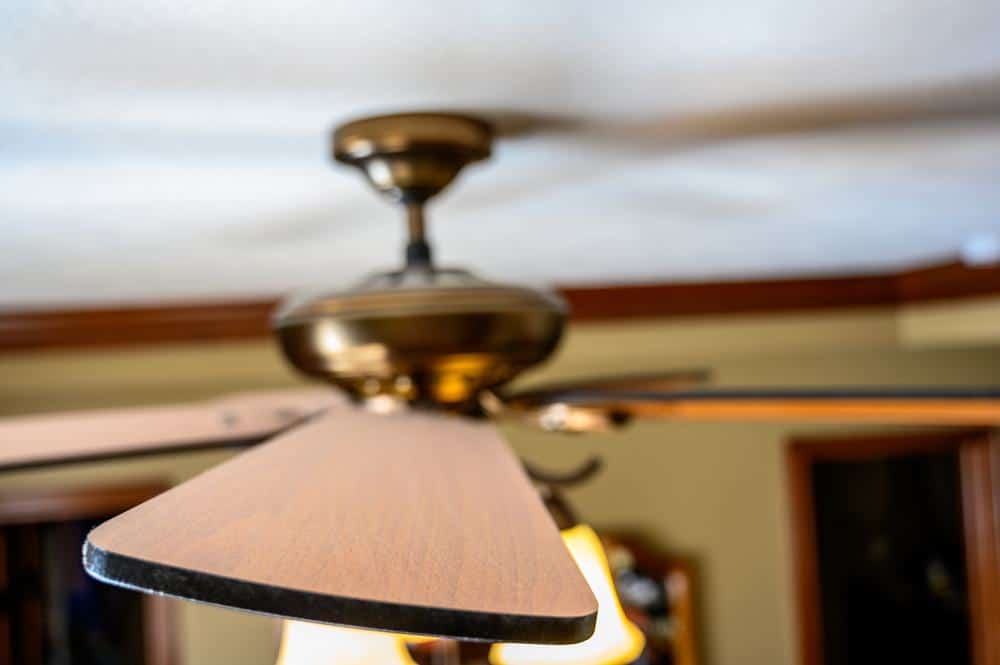
When it comes to creating a comfortable and aesthetically pleasing living room, the placement of a ceiling fan can play a crucial role. Not only does a ceiling fan enhance air circulation and create a more comfortable environment, but it can also complement the room’s decor and serve as a focal point. This article will delve into the factors to consider when determining where to place a ceiling fan in a living room, common mistakes to avoid, and how to optimize the fan’s efficiency and aesthetic appeal.
The optimal placement for a ceiling fan in a living room is in the middle of the room, at least 7 feet above the floor and 18 inches away from the walls. The fan size and height should be chosen based on the room’s size and ceiling height. For larger rooms, consider installing multiple fans. Always remember to avoid common mistakes such as choosing the wrong fan size or installing the fan too close to furniture or walls.
Key Factors to Consider
When determining the best placement for a ceiling fan in a living room, several key factors should be taken into consideration:
Room Size
The size of the room directly impacts the fan size needed for optimal air circulation. As a general rule, for rooms up to 75 square feet, a fan with a blade span of 29 to 36 inches is suitable. For larger rooms ranging from 76 to 144 square feet, fans with blade spans of 36 to 42 inches are recommended.
Ceiling Height
The fan should be at least 7 feet off the floor, but ideally between 8 to 9 feet for optimal air circulation. For standard ceilings, a fan with a short downrod or a flush-mounted fan is suitable. If the ceiling height is greater than 9 feet, a ceiling fan with a downrod is recommended to achieve the right height.
Fan Location
Ceiling fans should be installed in the middle of the room and at least 7 feet above the floor and 18 inches from the walls. For very large rooms, you might want to install a ceiling fan on each side of the room rather than the center, depending on your budget and cooling needs.
Common Mistakes to Avoid
When positioning a ceiling fan in a living room, several common mistakes should be avoided. These include choosing the wrong fan size, not considering the room layout, installing the fan too close to furniture or walls, incorrectly measuring ceiling slopes, and not reading the instruction manual.
Enhancing Aesthetic Appeal
The placement of a ceiling fan can greatly enhance the aesthetic appeal of a living room. By selecting a fan that complements the room’s decor style, positioning it in a way that optimizes both airflow and aesthetics, and choosing a unique design, you can create a focal point that adds character and charm to the room.
Efficiency in Cooling or Heating
The placement and direction of a ceiling fan can greatly impact its efficiency in cooling or heating a living room. By positioning the fan in the center of the room and adjusting its direction according to the season, you can optimize its performance and improve overall comfort in your home.
In conclusion, the placement of a ceiling fan in a living room involves considering several factors, including room size, ceiling height, and fan location. By avoiding common mistakes and focusing on enhancing aesthetic appeal and efficiency, you can create a comfortable, stylish, and energy-efficient living environment.
Frequently Asked Questions
What types of ceiling fans are available in the market?
There are several types of ceiling fans available in the market, such as standard ceiling fans, low profile ceiling fans, dual motor fans, outdoor ceiling fans, and energy star fans. Each type comes with its unique features and is suitable for different room conditions.
How do I choose the right ceiling fan style for my living room?
When choosing a ceiling fan style, consider the decor of your living room. For instance, a contemporary ceiling fan might be suitable for a modern living room, while a vintage-style fan would complement a traditional space. Consider factors like color, material, and design details to ensure the fan complements your room’s aesthetic.
How do I measure my room for a ceiling fan?
To measure your room for a ceiling fan, first measure the length and width of your room in feet. Multiply these numbers together to get the square footage of your room. This will help you determine the appropriate fan size. For the fan’s placement, locate the center of the room, ensuring it’s at least 18 inches away from the walls.
What is the importance of the fan direction in cooling or heating the room?
The direction of a ceiling fan plays a crucial role in cooling or heating a room. In summer, the fan should rotate counter-clockwise to push cool air down to the floor. Conversely, in winter, the fan should rotate clockwise at a slow speed to draw cool air up and force warm air down from the ceiling.
Can I install a ceiling fan by myself?
While it’s possible to install a ceiling fan by yourself, it’s recommended to hire a professional, especially if you’re not comfortable with electrical wiring. Incorrect installation can lead to poor performance and potential safety hazards. Be sure to read the manufacturer’s instructions thoroughly if you decide to install it yourself.












